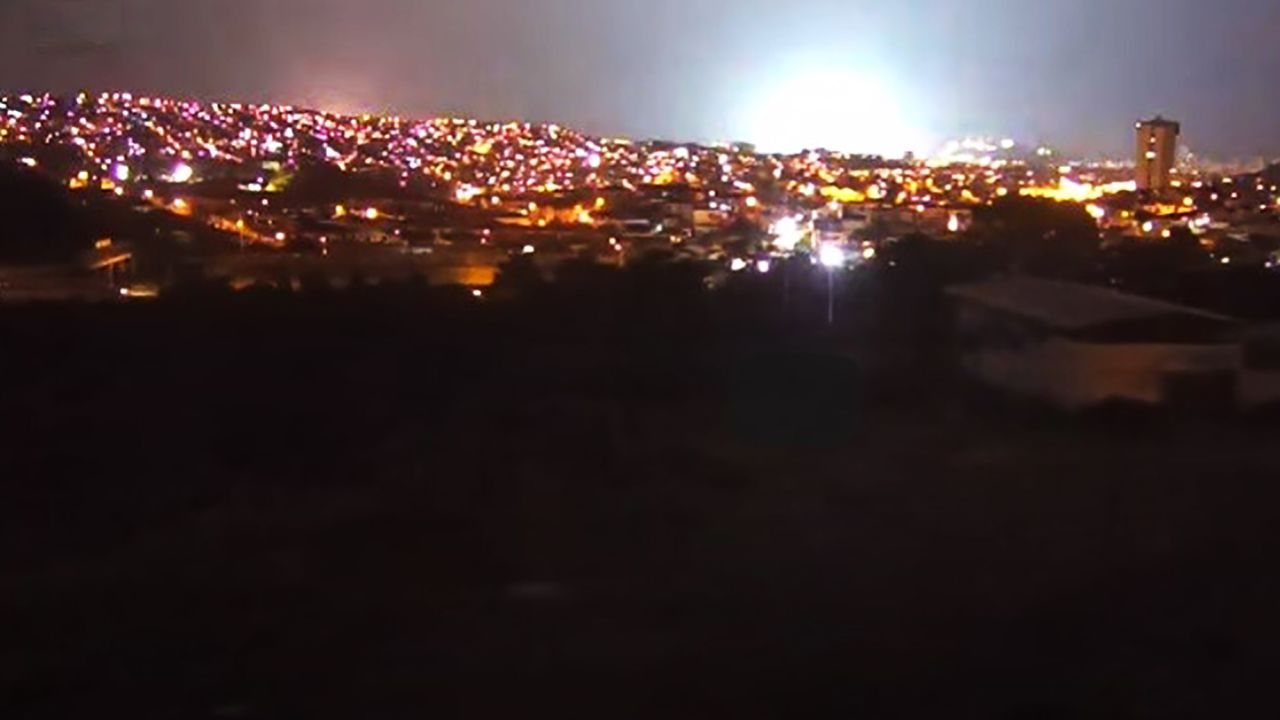Strange lights spotted in Morocco earthquake videos may be a phenomenon reported for centuries, scientists say

Editor’s Note: Sign up for CNN’s Wonder Theory science newsletter. Explore the universe with news on fascinating discoveries, scientific advancements and more.
Reports of “earthquake lights,” like the ones seen in videos captured before Friday’s 6.8-magnitude earthquake in Morocco, go back centuries to ancient Greece.
These outbursts of bright, dancing light in different colors have long puzzled scientists, and there’s still no consensus on what causes them, but they are “definitely real,” said John Derr, a retired geophysicist who used to work at the US Geological Survey. He has coauthored several scientific papers on earthquake lights, or EQL.
“Seeing EQL depends on darkness and other favorability factors,” he explained in an email.
He said the recent video from Morocco shared online looked like the earthquake lights caught on security cameras during a 2007 quake in Pisco, Peru.
Juan Antonio Lira Cacho, a physics professor at Universidad Nacional Mayor de San Marcos in Peru and the Pontifical Catholic University of Peru, who has studied the phenomenon, said cell phone video and the widespread use of security cameras has made studying earthquake lights easier.
“Forty years ago, it was impossible,” he said. “If you saw them nobody would believe what you saw.”
Earthquake lights take different forms
Earthquake lights can take several different forms, according to a chapter on the phenomenon coauthored by Derr and published in the 2019 edition of the Encyclopedia of Solid Earth Geophysics.
Sometimes, the lights may appear similar to ordinary lightning, or they may be like a luminous band in the atmosphere akin to polar aurora. Other times they resemble glowing spheres floating midair. They may also look like small flames flickering or creeping along or near the ground or larger flames emerging from the ground.
A video taken in China shortly before the 2008 Sichuan earthquake shows luminous clouds floating in the sky.
To better understand earthquake lights, Derr and his colleagues gathered information on 65 American and European earthquakes associated with trustworthy reports of earthquake lights dating back to 1600. They shared their work in a 2014 paper published in the journal Seismological Research Letters.
The researchers found that some 80% of the EQL occurrences studied were observed for earthquakes with magnitudes greater than 5.0. In most cases, the phenomenon was observed shortly before or during the seismic event, and it was visible up 600 kilometers (372.8 miles) from the quake epicenter.
Earthquakes, particularly powerful ones, are most likely to occur along or in the vicinity of the areas where tectonic plates meet. However, the 2014 study found that the vast majority of earthquakes linked to luminous phenomena occurred within tectonic plates, rather than at their boundaries.
Moreover, earthquake lights were more likely to occur on or near rift valleys, places where — at some point in the past — Earth’s crust had been pulled apart, creating an elongated lowland region that lies between two higher blocks of land.

Possible causes of earthquake lights
Friedemann Freund, Derr’s collaborator and an adjunct professor at San Jose University and a former researcher at NASA Ames Research Center, has come up with one theory for earthquake lights.
Freund explained that when certain defects or impurities in crystals in rocks are put under mechanical stress — such as during the build-up of tectonic stresses before or during a major earthquake — they instantly break apart and generate electricity.
Rock is an insulator that, when mechanically stressed, becomes a semiconductor, he said.
“Prior to earthquakes, huge volumes of rock — hundreds of thousands of cubic kilometers of rocks in the Earth’s crust — are being stressed and the stresses are causing shifting of the grain, the mineral grains relative (to) each other,” he added in an interview via video call.
“It’s like switching on a battery, generating electrical charges that can flow out of the stressed rocks into and through unstressed rocks. The charges travel fast, at up to around 200 metres per second,” he explained in a 2014 article for The Conversation.
Other theories about what causes earthquake lights include static electricity produced by the fracturing of rock and radon emanation, among many others.
At present there is no consensus among seismologists on the mechanism that causes earthquake lights, and scientists are still trying to unlock the mysteries of these outbursts.
Freund hopes one day it might be possible to use earthquake lights, or the electric charge that causes them, in combination with other factors, to help forecast the approach of a major quake.

No comments:
Post a Comment